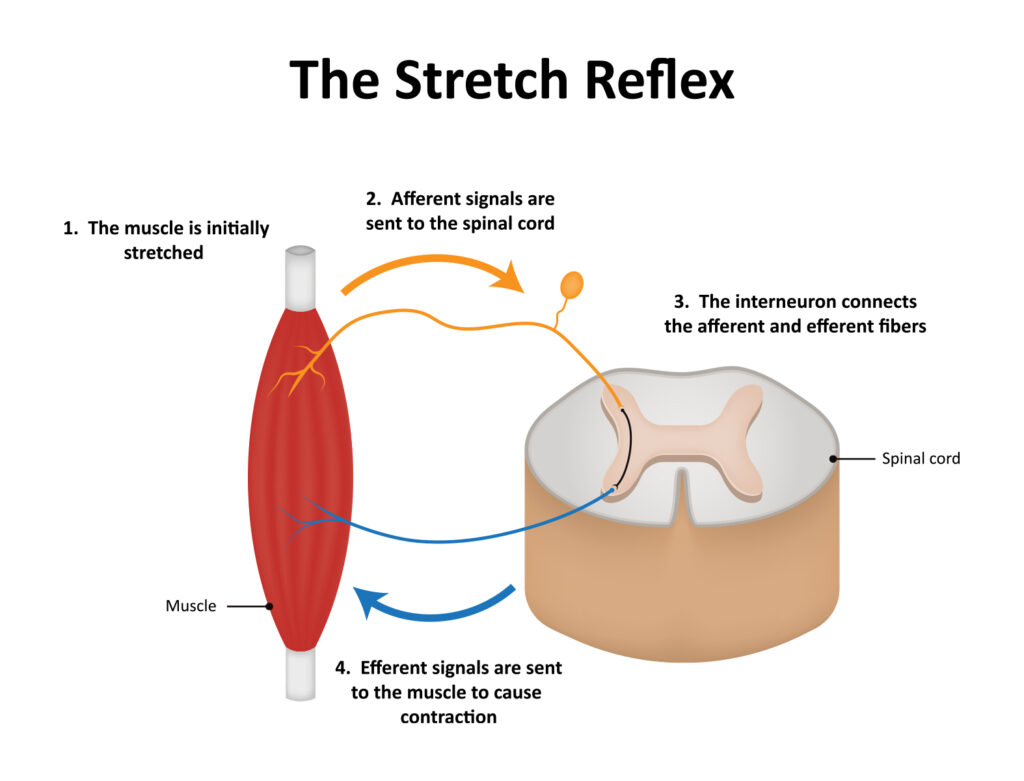Muscle spasticity of spinal origin is a neurological condition caused by damage to the spinal cord, leading to involuntary muscle stiffness, hypertonia, and exaggerated reflexes. This form of spasticity commonly results from spinal cord injury (SCI), multiple sclerosis (MS), or other spinal cord diseases. Understanding its underlying mechanisms, symptoms, and treatment options is essential for improving mobility and quality of life.

What Is Muscle Spasticity of Spinal Origin?
Muscle spasticity of spinal origin arises due to disrupted nerve signaling within the spinal cord. Normally, the central nervous system (CNS) maintains a balance between excitatory and inhibitory signals, ensuring smooth muscle movement. However, spinal cord damage interferes with this balance, leading to persistent muscle contractions and stiffness.
Neurological Mechanism of Spasticity
Spinal cord injuries disrupt descending inhibitory pathways from the brain, allowing spinal reflexes to become hyperactive. This uncontrolled activity leads to muscle hypertonia, involuntary contractions, and impaired motor function.
Causes of Muscle Spasticity of Spinal Origin
Spasticity occurs due to conditions that impair the spinal cord’s ability to regulate nerve signals. Common causes include:
1. Spinal Cord Injury (SCI)
Traumatic or non-traumatic spinal cord injuries can lead to permanent nerve damage, disrupting motor control and increasing muscle tone.
2. Multiple Sclerosis (MS)
MS is an autoimmune disease that damages the myelin sheath, affecting nerve transmission and causing muscle spasticity.
3. Cervical and Thoracic Myelopathy
Degenerative changes in the spinal cord due to conditions like herniated discs or spinal stenosis can contribute to spasticity.
4. Transverse Myelitis
Inflammation of the spinal cord can cause sudden-onset spasticity, muscle weakness, and loss of motor function.
5. Spinal Tumors
Tumors compressing the spinal cord may disrupt nerve signaling, leading to increased muscle stiffness and uncontrolled reflexes.
Symptoms of Spasticity of Spinal Origin
The severity of spasticity varies depending on the extent of spinal cord damage. Common symptoms include:
- Increased Muscle Tone (Hypertonia): Persistent stiffness in affected muscles.
- Involuntary Muscle Spasms: Sudden, uncontrolled movements triggered by stimuli.
- Exaggerated Reflexes (Hyperreflexia): Overactive deep tendon reflexes.
- Pain and Discomfort: Muscle tightness leading to pain, cramping, and fatigue.
- Impaired Mobility: Difficulty walking or performing daily activities due to muscle rigidity.
Diagnosis of Spinal Spasticity
A thorough neurological assessment is essential to determine the severity and underlying cause of spasticity. Common diagnostic methods include:
- Clinical Examination: Evaluating muscle tone, reflexes, and voluntary movement.
- Modified Ashworth Scale (MAS): Measuring spasticity severity.
- Electromyography (EMG): Assessing abnormal electrical activity in muscles.
- MRI or CT Scan: Detecting spinal cord lesions, tumors, or degenerative changes.
Treatment Options for Spasticity of Spinal Origin
Spasticity management requires a multidisciplinary approach involving medications, physical therapy, and surgical interventions.
1. Medications for Spasticity Relief
- Baclofen: A GABA agonist that reduces spasticity by inhibiting spinal reflex activity.
- Tizanidine: Decreases nerve signals to muscles, reducing tightness and spasms.
- Dantrolene Sodium: Directly affects muscle cells to lower contraction intensity.
- Diazepam (Valium): A benzodiazepine that provides muscle relaxation.
- Botulinum Toxin (Botox) Injections: Weakens overactive muscles to reduce spasticity.
2. Physical Therapy and Rehabilitation
- Stretching Exercises: Improve flexibility and prevent contractures.
- Strength Training: Strengthens opposing muscle groups to counteract spasticity.
- Bracing and Orthotics: Supports joint alignment and mobility.
3. Surgical Interventions
For severe spasticity unresponsive to conservative treatments, surgical options include:
- Intrathecal Baclofen Pump (ITB): Delivers baclofen directly to the spinal fluid for continuous spasticity control.
- Selective Dorsal Rhizotomy (SDR): Severing specific nerve fibers to reduce spasticity.
- Tendon Release Surgery: Lengthening contracted muscles to improve movement.
4. Alternative and Assistive Therapies
- Aquatic Therapy: Water-based exercises that relieve muscle tension.
- Electrical Stimulation: Neuromuscular stimulation to enhance muscle control.
- Acupuncture: May provide relief by improving circulation and muscle relaxation.
Lifestyle and Home Management Strategies
Caregivers and patients can adopt practical strategies to manage spasticity:
- Regular Stretching and Exercise: Helps maintain muscle flexibility.
- Proper Posture and Positioning: Prevents contractures and reduces discomfort.
- Hydration and Nutrition: Supports overall muscle health.
Prognosis and Long-Term Outlook
The long-term impact of muscle spasticity of spinal origin depends on the underlying condition and treatment response. Early intervention, personalized rehabilitation, and continued medical management significantly improve functional outcomes and enhance mobility.